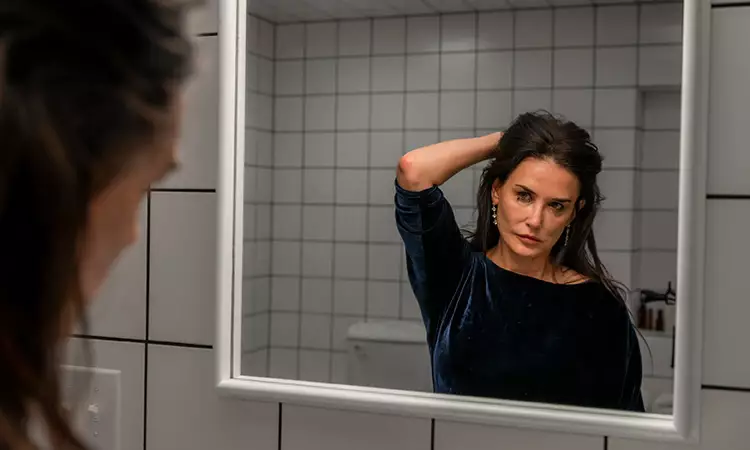In the realm of contemporary cinema, the interrogation of beauty standards and the female experience is a recurring theme, often explored through graphic storytelling and satire. Coralie Fargeat’s The Substance accomplishes this task with both elegance and brutality, depicting the complex struggles of Elisabeth Sparkle, a middle-aged aerobics instructor facing an avalanche of societal pressures. Fargeat builds a narrative that goes beyond mere horror; it delves into a potent commentary on the toxic ideals perpetuated by Hollywood and social media. Drawing inspiration from critical discourses surrounding women’s autonomy, particularly through Angela Carter’s utilitarian perspectives, Fargeat ventures into the gruesome alongside the absurd.
Elisabeth’s character, played vividly by Demi Moore, embodies the conflict of desirability in a culture that idolizes youth. The impending threat of replacement by the younger Sue (portrayed by Margaret Qualley) catalyzes Elisabeth’s mental decline, an illustration of how deeply embedded the societal comparison is within women’s consciousness. The film meticulously captures her descent into insanity propelled by the chilling realization that her worth is dictated by her physical appearance. This dynamic unravels the notion that beauty is a liberating force; rather, it presents a disturbing paradigm where divine femininity is a mask for subjugation.
Fargeat’s stylistic choices in The Substance are as significant as its thematic content. The use of vivid, aggressive aesthetics draws direct parallels to the grotesque realities faced by women. Influences reminiscent of horror titans like David Cronenberg and Gaspar Noé amplify the visceral impact, enveloping viewers in a strikingly unsettling atmosphere. The camera techniques employed distort the image of women, exaggerating both their forms and the predatory nature of the men in their orbit. Each frame pulsates with exaggerated colors, erratic movements, and a heightened sense of grotesqueness, intensifying the critical lens through which beauty and exploitation are viewed.
Fargeat articulates sharp satire through her characterizations. The film’s male figures are depicted as ruthless caricatures, emblematic of a society that relentlessly commodifies female bodies. With wry humor interspersed amidst moments of horror, Fargeat critiques the male-dominated frameworks that benefit from female exploitation. As the narrative progresses, it becomes apparent that the grotesque metamorphosis of Elisabeth is not merely a consequence of her actions but rather a reflection of a systemic failure to acknowledge women’s rights to autonomy and self-determination.
Ultimately, The Substance serves as a poignant reminder of the cyclical nature of these issues, challenging viewers to confront the unsettling reality of gender dynamics persisting in modern culture. In an age where social media further compounds the struggle for authenticity, the film urges reflection on whether genuine change is possible or if the predicaments of its characters will echo through time. Through its incisive narrative, Fargeat not only unveils the horrors embedded in the quest for beauty but also ignites a critical discourse about the nature of empowerment and autonomy within an exploitative system.

